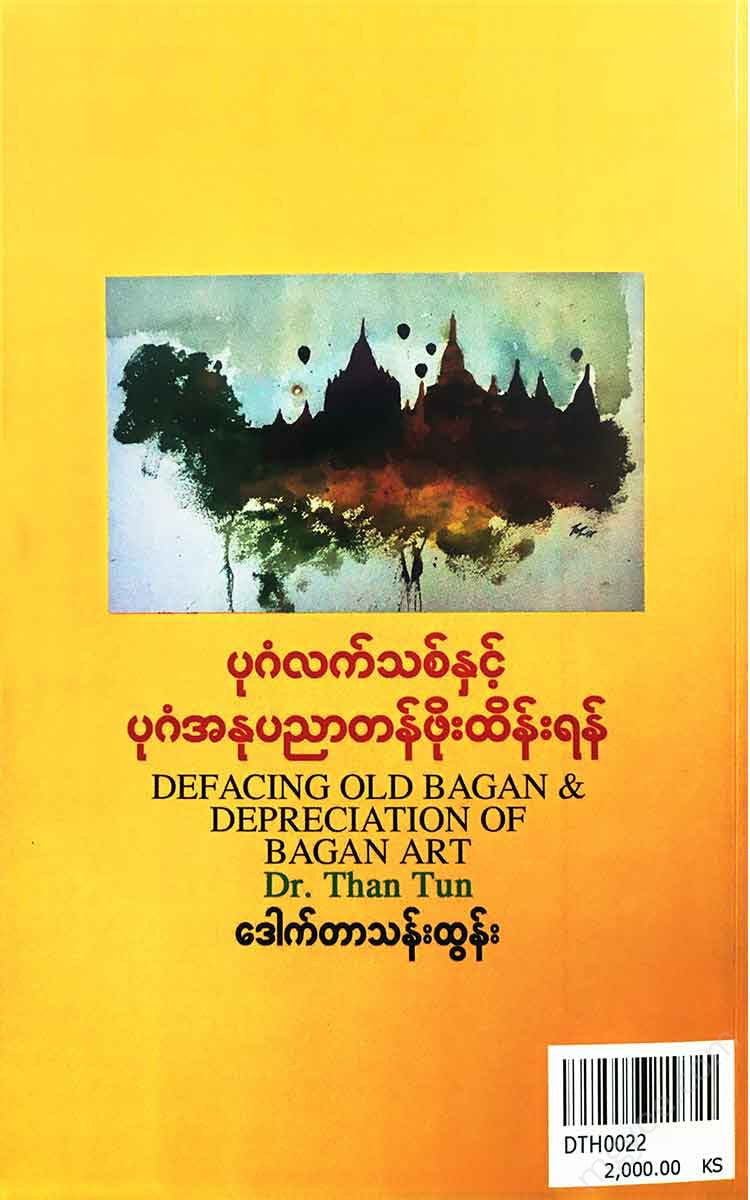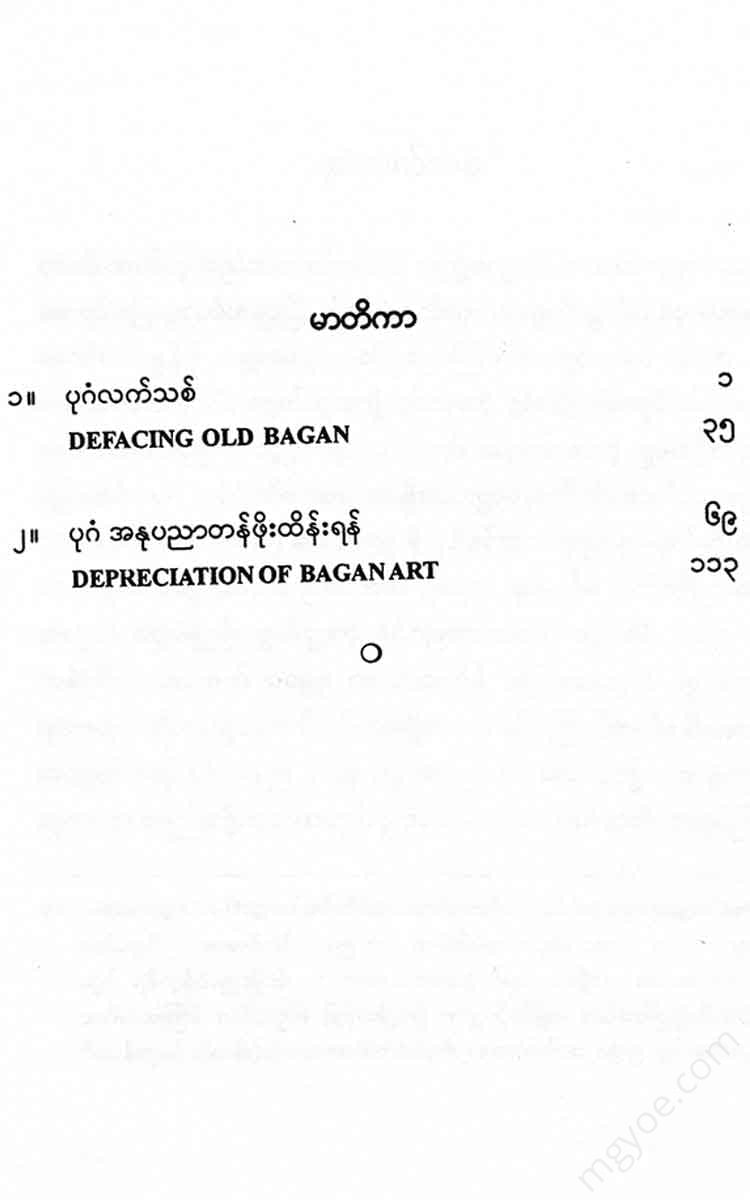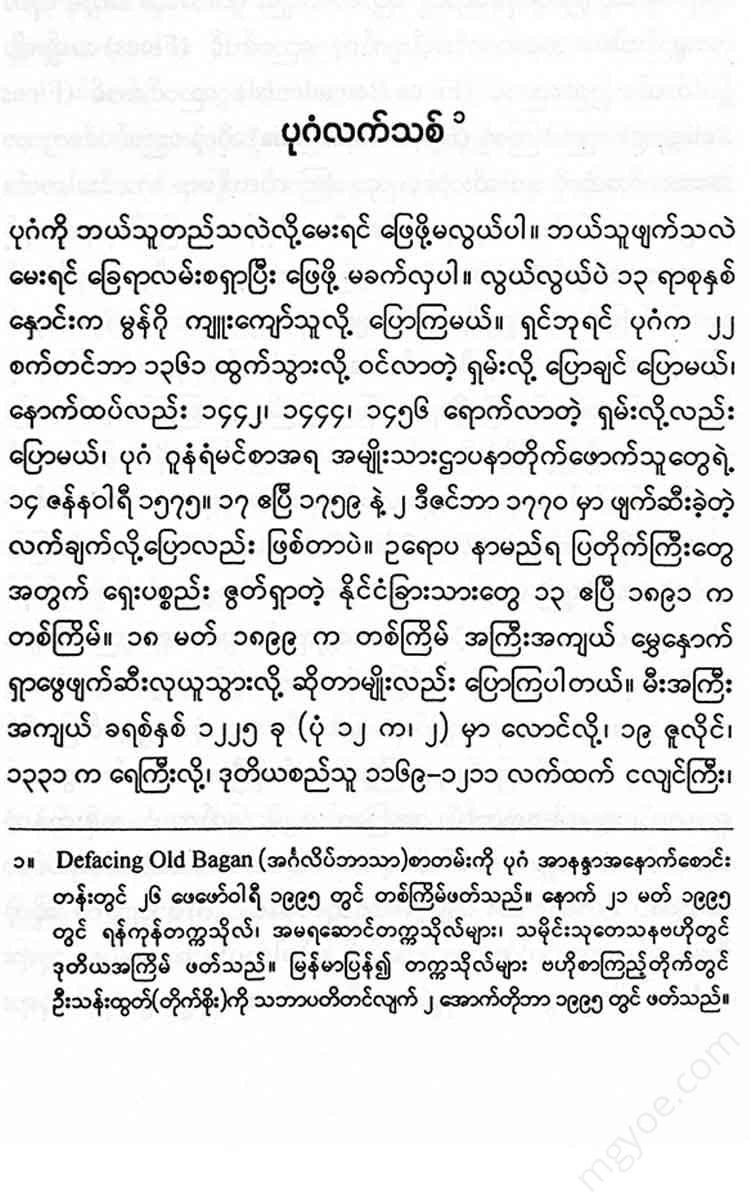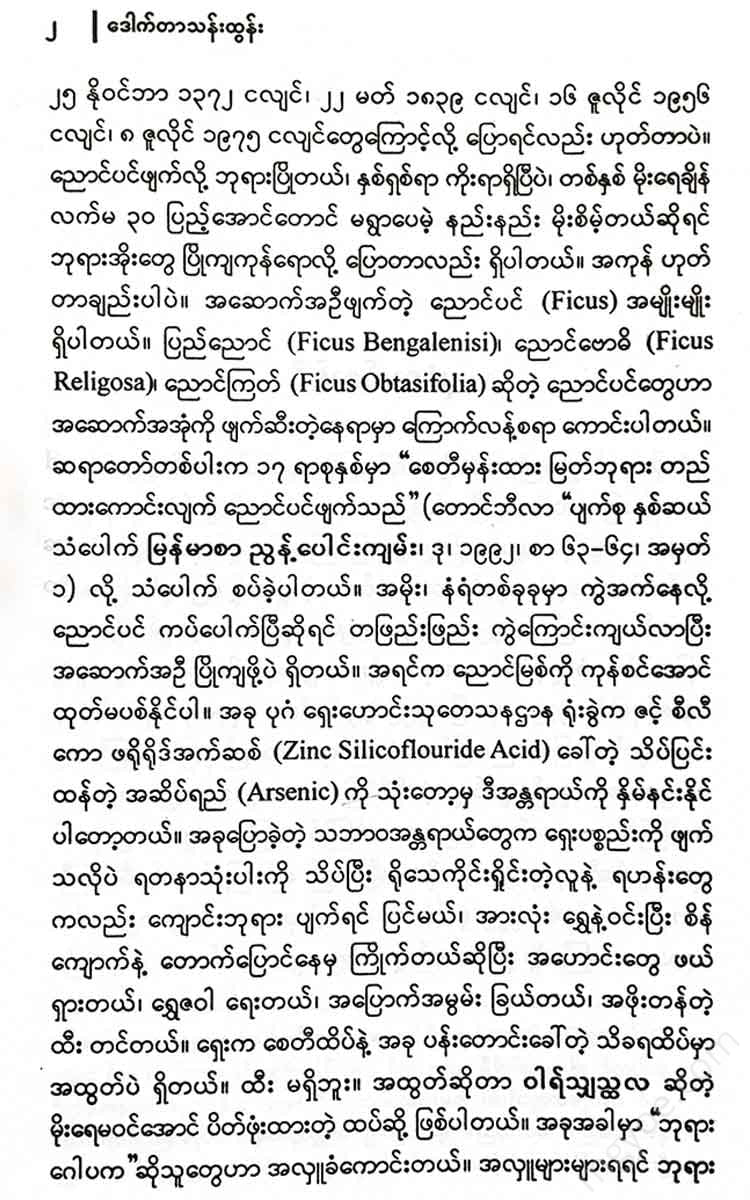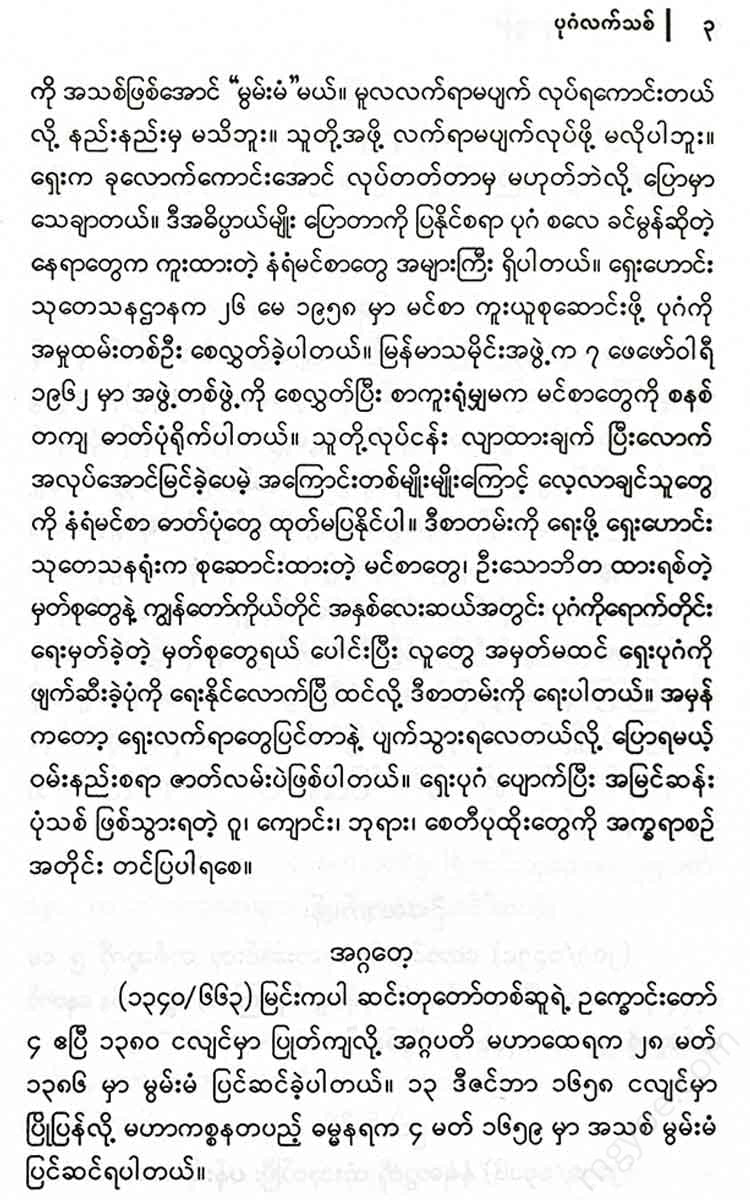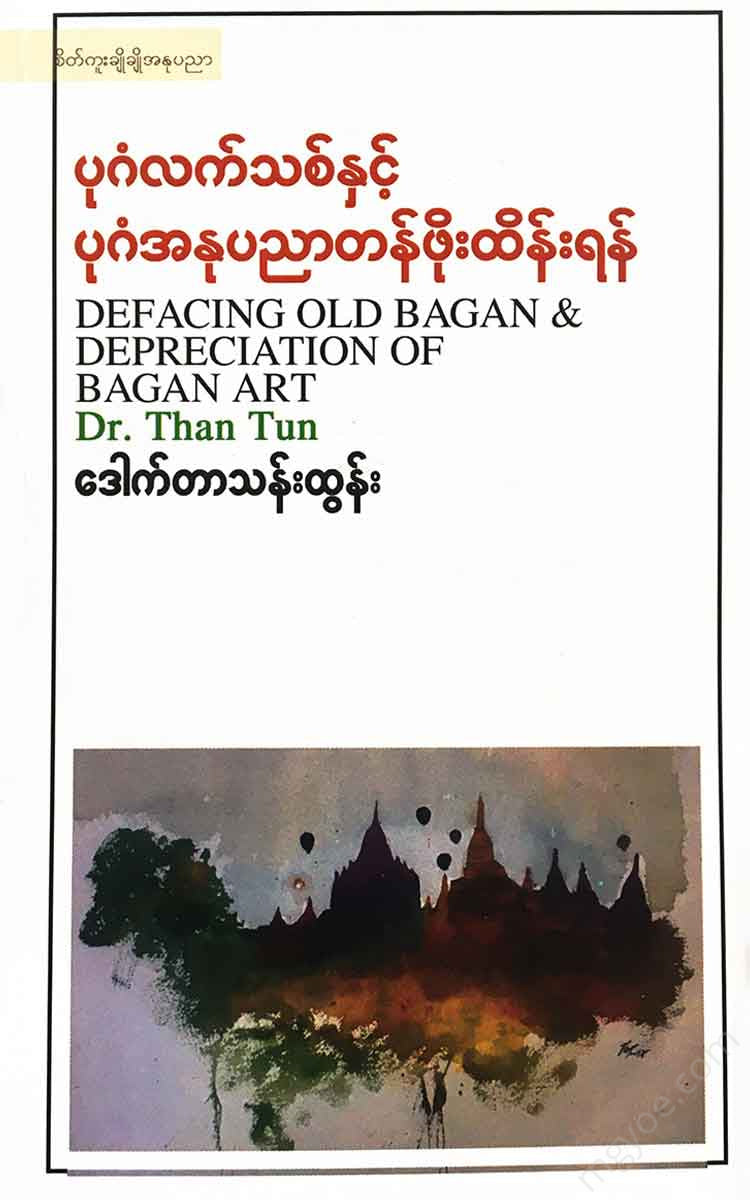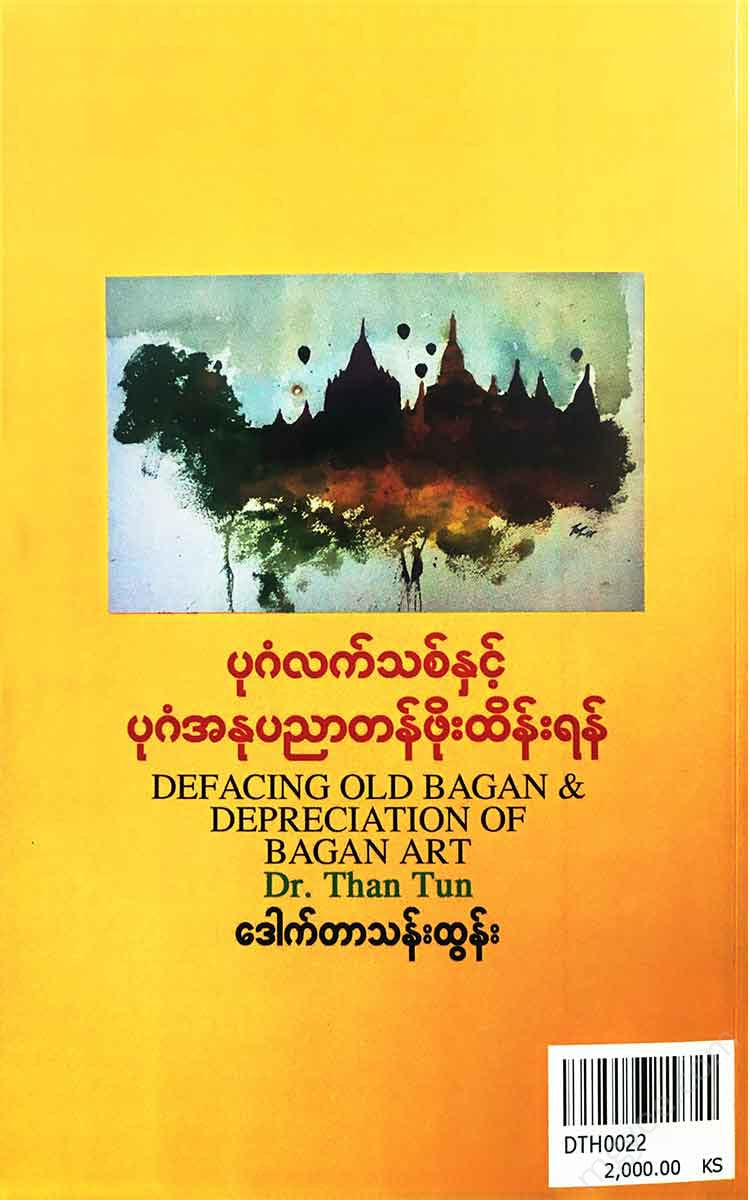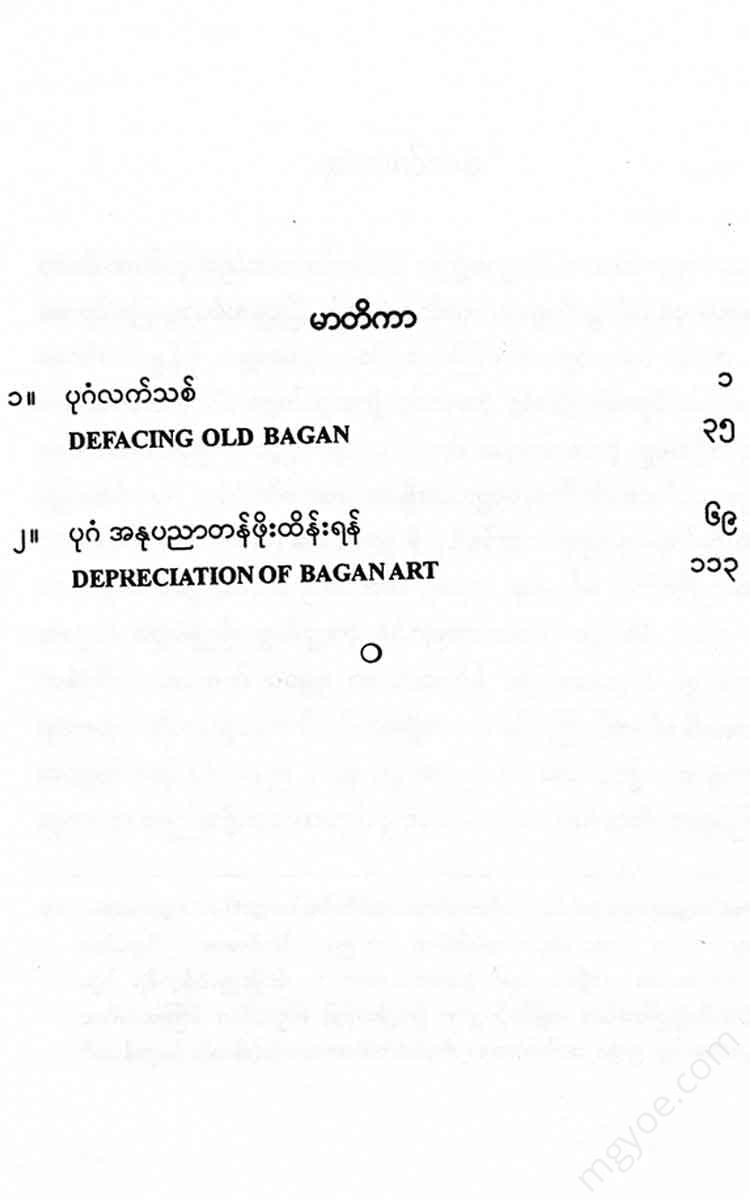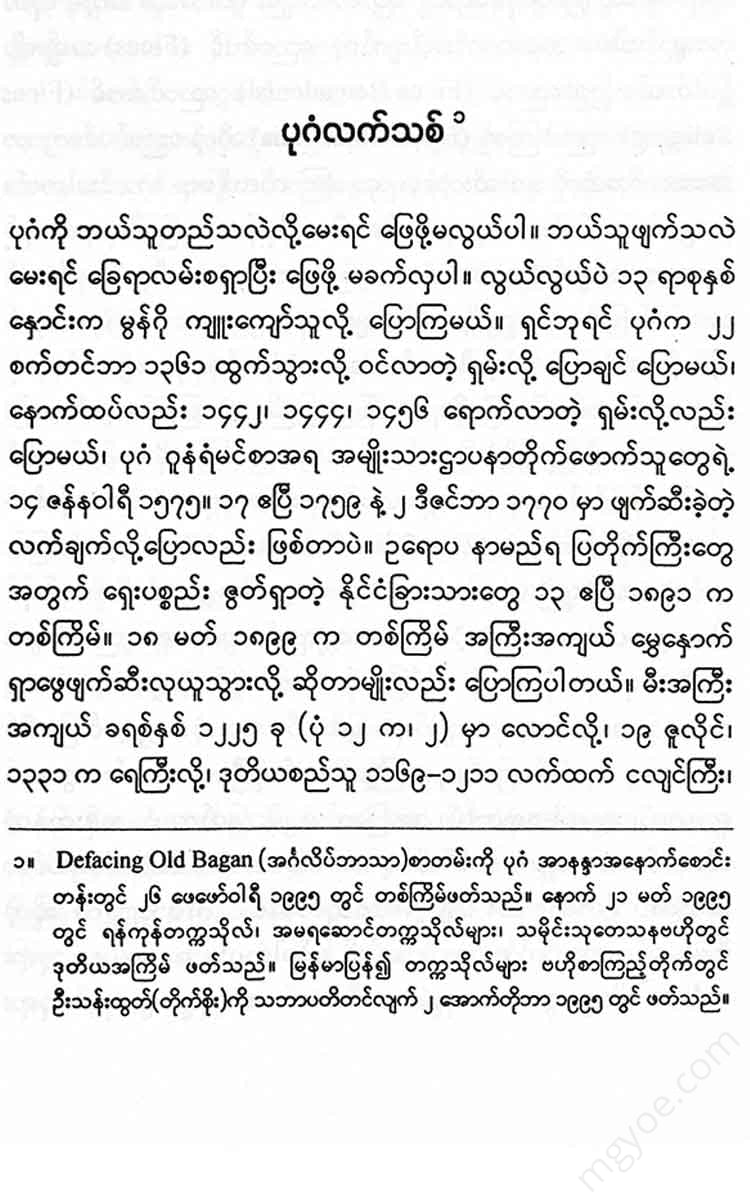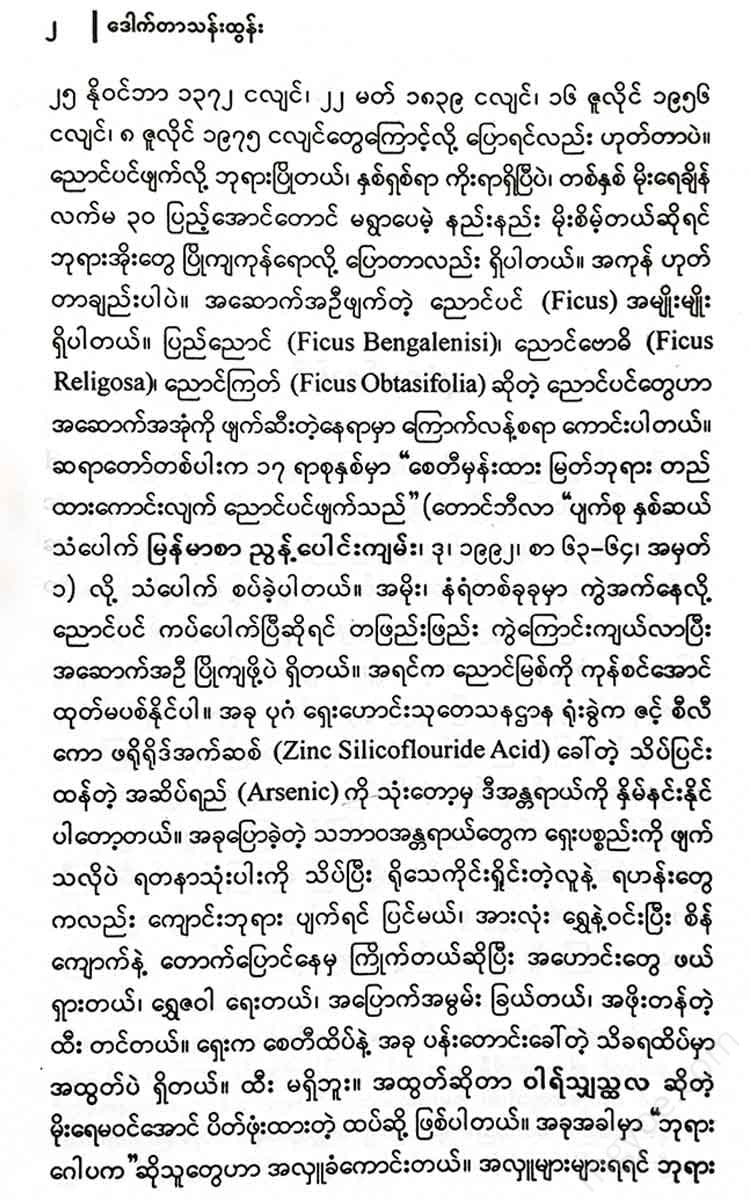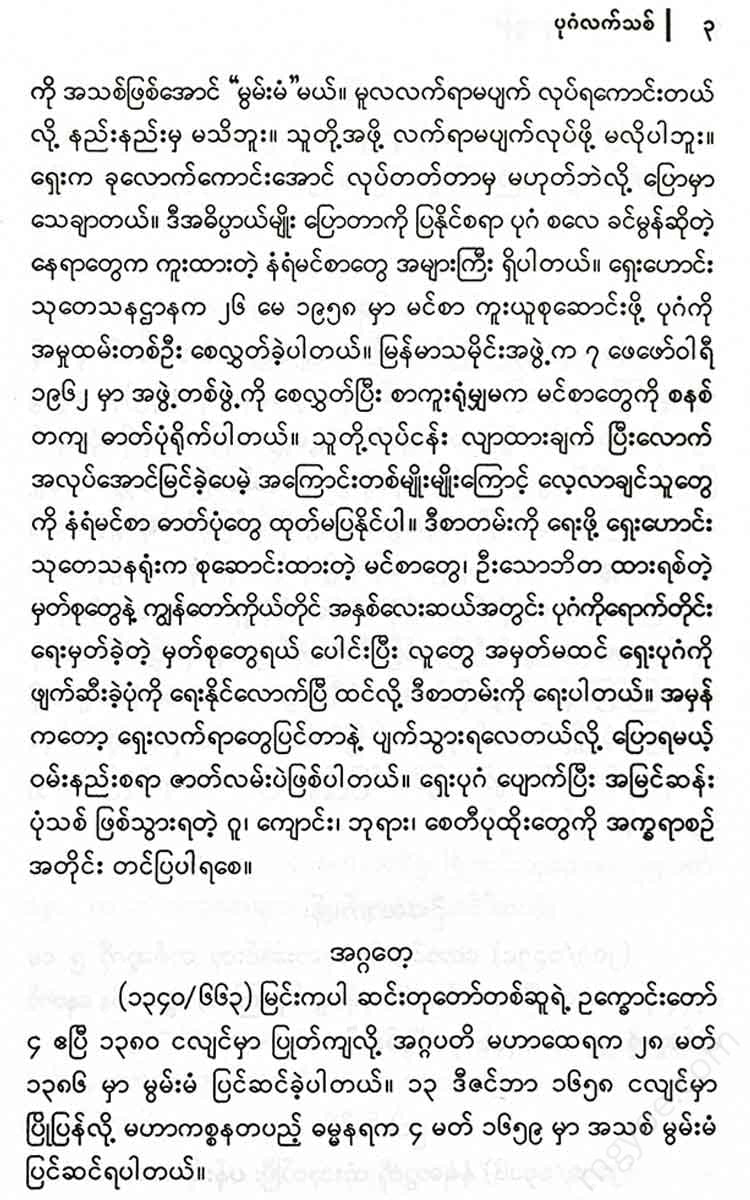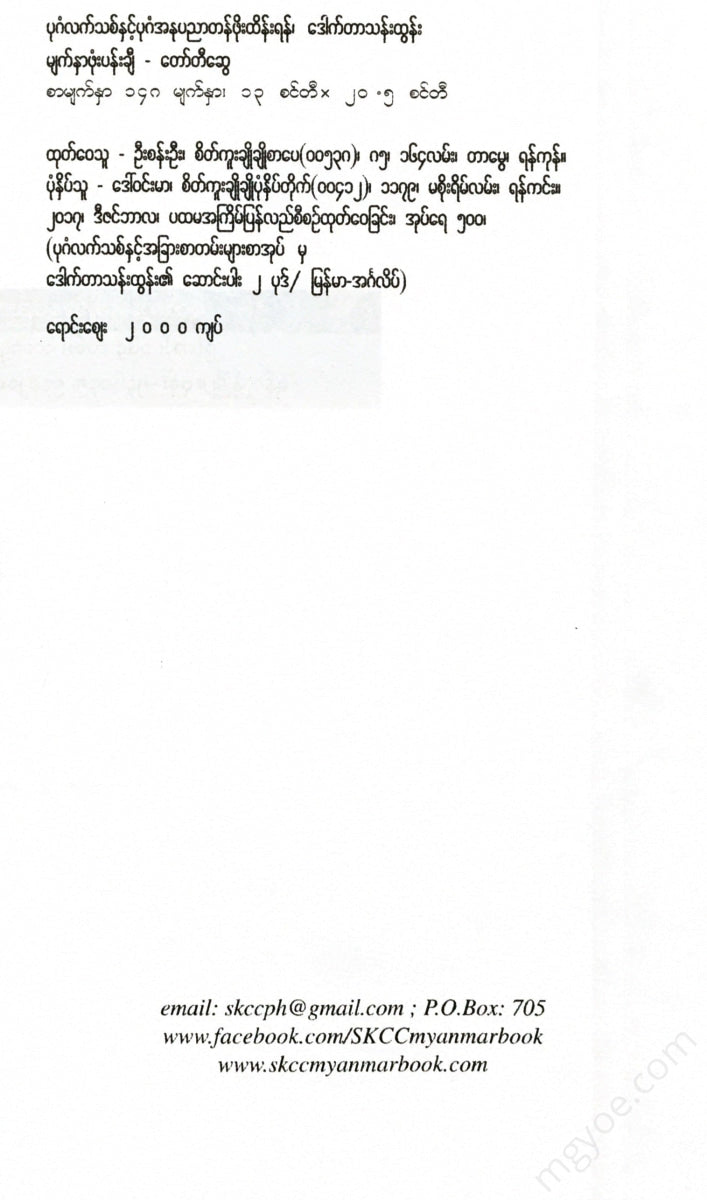စိတ်ကူးချိုချိုစာပေ
Dr. Than Tun - To preserve the value of modern Bagan and Bagan art
Dr. Than Tun - To preserve the value of modern Bagan and Bagan art
Couldn't load pickup availability
Middle cave
(478/278 B) The throne in the middle cave of the three Min Nan Thu pagodas was damaged, so an unknown person repaired it on (28 March) 1434.
Discarded jewelry
(1203/549) The southern wall of the East Pavilion was painted with lime and a pair of Buddha footprints were painted on (14 January 1575). At about the same time, the northern wall of the East Pavilion was painted with lime and garlands were painted in color. The eastern wall of the North Pavilion was also painted with lime and garlands twice. Various flower patterns were painted in color on the western wall of the South Pavilion. The image on the left wall of the entrance to the Garbanggara (middle building) was destroyed by the monks and had to be repaired twice. The person who repaired the damage with such great zeal was Min Yan Aung. All the renovations and painting in the Apyayan Cave for more than half of the 16th century were his responsibility.
U Sot Pan
(207/1374) Taungba 6, One Buddha image was painted on 9 May 1733 and a pitan (roof) was drawn on top. Another one was “renovated” on 29 May 1733.
Upalithem
(2121/1416) The walls were plastered and painted with new paint by order of King Padon (1782-1819). It is said that the cost of one pisas of silver was twenty kyats. The date of the painting was 4 March 1794. There is an inscription on the wall outside the north cave outside the Upalithein that says that it was completed within a year. This inscription was written by U Tun Hlaing (the late writer Shwe Kaing Thar, also known as U Sobita) in his notebook. All the paintings and inscriptions on the plaster of the cave walls were destroyed in the earthquake of 8 July 1975.
Cave
(1219/555) The Myint Ka Pa Ko Tin Trool was buried on 15 December 1223, and the cave is also called Tin Trool Pagoda.
Khemvaragu
(367/244) On April 17, 1759, Maha Thera Khemawara renovated the Wat Gyi Inn to make it completely new, and this cave was also named Khemawara Pagoda.
Cave
(Tamani 1129, 478 Ka, Sari Village) Thera Panthaku gave the image a “new face” on 25 March 1212.
Cave
The three statues near That Soe Mountain (where the gate faces west) were repaired by an unknown craftsman on 15 July 1429.
Cave
(Dawgyi 1496/819) The image in Bagan was renovated by Pitaka Soe Dawgyi Sirinyana (18 February 1626).
Cave
(1895/1192) Taungbi, Five-Faced Pagoda (1831/1129) One of the three western pagodas was renovated by Pinthaku Thera (25 March 1212).
Big cave
(298/197a) Some scenes from the Great Pig, Five Hundred and Fifty , were cut out of plaster for a museum in Germany by TH. H. Thomann and five others. When they were cut, they were placed on a newspaper to keep the plaster in place.
The old one was glued on. When it was forbidden to continue, the newspaper was stuck on the box ready to be removed and it was found that it was Evening Time Glasgow Saturday 18 March 1899. The newspaper must have been published several weeks earlier. However, for the sake of simplicity, the date of the German theft was given as 18 March 1899. This was mentioned in the report of U Nyein Maung, who wrote in 24 June 1958.
Yes.
Gautama Buddha
(176/136) The statues of Nyaung Oo Pagoda at Nyaung Pit Taung Monastery were renovated by U Htun Lin, U Aung Tha and Maung Htay on (13 April) 1891.
7 Five-faced Cave
(566) Min Nanthu (south), the eastern wall of the entrance arch of the south gate was decorated by Taungku Taungdwin Min Saya (31 October 1442). The other was decorated by Min Gangathu on 20 August 1623.
Bird-shooting mountain pagoda
(176/136) The statues were damaged by the monks and were repaired by the Venerable Ngampittaung Maha Thera, who received donations and began to repair them on 12 February 1401 and completed them on 27 April 1401. Twelve Dayakas and Dayikamas were assigned to repair them one by one. Their names were Nga Aung Myint, Nga Kaw Tu, Mae Sa, O Thalat, Nga Sat, Nga Su, Sulamani Maha Thera, Nga Swe Nin, O Swe Min, Nyan On, On Nye Ma and On Nye Lat.
Sula Muni
(748/364) The image in the upper garbangar (temple) was renovated by the Shwe Kyaung Maik Thera (8 December 1299). The paintings on the west wall of the north corridor on the ground floor were plastered and the Dhammarajaka Pagoda was painted by Satturangabala on 2 August 1317. If this Pagoda painting can be found, it will be possible to verify whether or not, as U Ba Tint (23 February 1995) said, the artists of the late Bagan period used to draw with distance. The monk Nandasila painted three Buddha images with the corresponding Bodhi tree on the north corridor wall of the Sula Muni on 17 October 1778. A disciple of the Ko Kyaung Tay Varadham also painted the Psaya wall below the north corridor (1)

